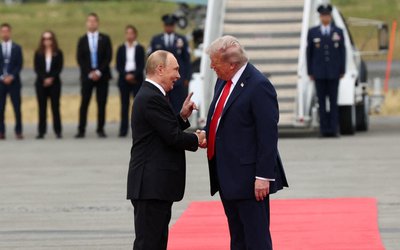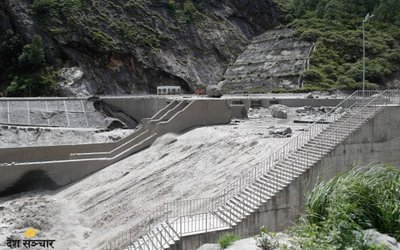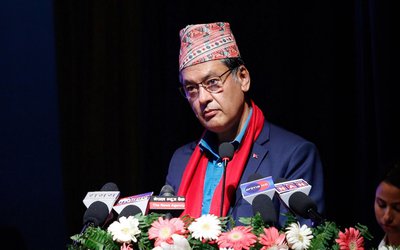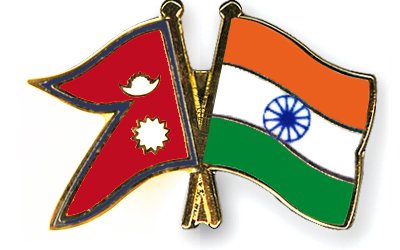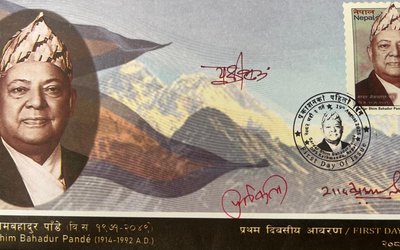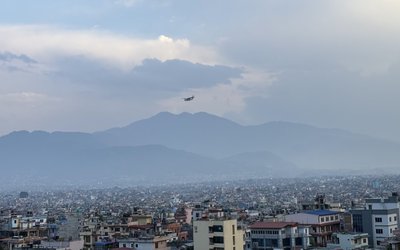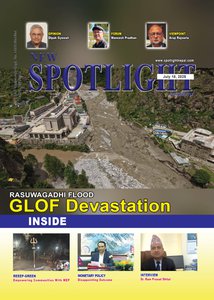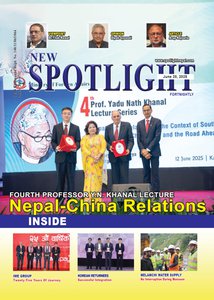The air in Kuala Lumpur last Tuesday crackled with a quiet intensity rarely felt in diplomatic summits. There were no thunderous declarations of a new military alliance, no sensational headlines about sanctions or regime change. Instead, leaders from China, the ten nations of ASEAN, and the six oil-rich monarchies of the Gulf Cooperation Council (GCC) gathered for something far more revolutionary: the meticulous construction of an economic alternative to Western dominance. While Western media obsesses over tariff tweets and political rallies, a tectonic shift just occurred in the Global South – and its epicentre was Malaysia.
This wasn’t just another meeting. It was the birth pang of a new economic reality. Imagine a bloc encompassing 2.15 billion people – over a quarter of humanity. Picture an economic powerhouse generating nearly $25 trillion in collective GDP, accounting for roughly 30% of global economic output and, crucially, 55% of global GDP growth (measured in Purchasing Power Parity). This is the sheer scale of the ASEAN-GCC-China partnership now taking shape.
For South Asia, watching from the sidelines, this isn't distant geopolitics; it's a masterclass in strategic realignment in a fragmenting world.
The Unlikely Spark: Trump’s Tariffs and the Forging of Necessity
The catalyst for this unprecedented gathering wasn't grand ambition alone; it was born from perceived abandonment. When the Trump administration slammed tariffs as high as 49% on key ASEAN exporters like Cambodia, Vietnam, Thailand, and Indonesia earlier this year – dubbed the "Liberation Day" tariffs – it wasn't just an economic blow; it was a profound wake-up call. These nations, long integrated into US-centric supply chains, suddenly faced an existential threat to their export-driven models.
"Carrying on with business as usual will not suffice for this highly dynamic economic region," declared ASEAN's own strategic integration plan unveiled just days before the summit, acknowledging the acute pressure. As Chong Ja Ian from the National University of Singapore starkly put it, “Given the uncertainty and unpredictability associated with economic relations with the United States, ASEAN member states are looking to diversify”. The GCC, witnessing volatile Western policies in the Middle East and seeking its own economic diversification beyond oil, found a shared urgency. China, facing its own tariff battles and Western "decoupling" efforts, saw a strategic opening. Necessity, as always, proved the mother of invention – or in this case, realignment.
Beyond Handshakes: The Five Pillars of a New Economic Order
What emerged from Kuala Lumpur wasn't vague promises, but a concrete blueprint for integration designed to function outside traditional Western-dominated systems:
The Free Trade Accelerator: The summit aggressively pushed to finalise two mega-deals: the ASEAN-China Free Trade Area (ACFTA) 3.0 Upgrade, focusing on digital trade and green economy rules for the modern age, targeted for signing by October 2025; and the long-pending China-GCC Free Trade Agreement. Simultaneously, ASEAN and the GCC launched a feasibility study for their own FTA, aiming to dramatically boost their current $130.7 billion trade relationship towards a projected $180 billion by 2032. This isn't just about removing tariffs; it’s about creating seamless rules for the 21st century – rules written in Asia and the Gulf, not Brussels or Washington.
Building the De-Dollarisation Highway: Perhaps the most politically resonant agreement was the commitment to explore "cooperation on local currency and cross-border payments". This is the quiet core of the challenge to dollar hegemony. Imagine a future where Malaysian palm oil is bought with Chinese Yuan, settled through a Riyadh clearinghouse, bypassing the SWIFT system and its potential for US sanctions. Vietnam’s PM Pham Minh Chinh explicitly proposed linking financial hubs – Ho Chi Minh City, Kuala Lumpur, Singapore, Shanghai, Dubai, Riyadh – into a seamless, regional financial ecosystem. This is about reclaiming monetary sovereignty.
Infrastructure as Destiny: The Belt and Road Initiative (BRI) found powerful new synergies. China pledged to align its vast infrastructure drive with ASEAN’s own Master Plan on Connectivity 2025 and the GCC’s ambitious Vision 2030 diversification plans. Think ports in Indonesia funded by Saudi sovereign wealth funds ($2 Trillion under GCC management!), built by Chinese engineering, feeding into logistics corridors designed to lessen the chokehold of the Malacca Strait – a vital artery currently dominated by Western-aligned naval powers. This is physical integration on a continental scale.
Claiming the Digital Future: While the West debates AI ethics, this bloc is building the infrastructure. They agreed to develop a cross-regional digital economy framework covering digital trade, e-commerce, fintech, AI startups, and data security. This leverages ASEAN’s groundbreaking Digital Economy Framework Agreement (DEFA) – the world’s first region-wide digital pact – combined with GCC capital and China’s tech manufacturing might. With ASEAN's digital economy alone projected to hit $2 trillion by 2030, this is about setting the standards and owning the platforms of the next industrial revolution .
Energy Security & The Pragmatic Green Transition: Rejecting Western pressure for an abrupt end to hydrocarbons, the bloc adopted a "balanced approach". The GCC guarantees stable oil and gas supplies vital for China and ASEAN's growth, while collectively investing in emissions-reduction tech and renewables. It’s a pragmatic energy transition acknowledging different development stages – a stance many in energy-hungry South Asia will find relatable.
The Message to Washington: Unity Over Fragmentation
Crucially, this bloc isn't seeking isolation, but resilience. ASEAN leaders, while pursuing individual talks with Washington, forged a consensus: no bilateral deal with the US would come "at the expense of any other" ASEAN member. As Malaysian PM Anwar Ibrahim declared, they would “protect the turf of 650 or 660 million people”. This is the essence of multipolarity in action – middle powers coordinating to resist being picked off or forced into zero-sum choices.
Chinese Premier Li Qiang framed it as “1+1+1 > 3”, emphasising mutual benefit over ideological alignment . Analyst Chen Hong saw it as a “collective declaration by Global South nations... asserting that multipolarity and equal cooperation represent the prevailing will of the people”. This summit signals that the Global South is no longer content to be a passive recipient of Western economic diktats or a battlefield for US-China rivalry. It is actively building its own tables, not just asking for seats at existing ones.
Challenges on the Road: Fault Lines in the Foundation
This ambitious vision isn't without hurdles. Significant challenges remain:
ASEAN’s Diversity Dilemma: Bridging the vast developmental gap between Singapore and Laos under common frameworks is daunting. Can regulatory coherence be achieved?
The South China Sea Shadow: While economic ties with China deepen, maritime disputes with the Philippines, Vietnam, and Malaysia remain unresolved flashpoints that external powers could exploit to sow division .
The Myanmar Millstone: ASEAN’s internal paralysis over Myanmar’s crisis continues, undermining its unity and credibility on the global stage .
Dollar Dominance: Creating viable, large-scale alternatives to the dollar-based financial system is a monumental technical and political challenge requiring unprecedented trust and coordination .
GCC Cohesion: The GCC is less institutionalised than ASEAN. Will its members consistently act as a bloc, or will individual nations (like the UAE pursuing its own global agenda) break ranks?
The South Asian Lens: Lessons from the Kuala Lumpur Playbook
For policymakers in Delhi, Islamabad, Dhaka, and Colombo, the Kuala Lumpur summit offers profound lessons as they navigate the same turbulent waters of US-China rivalry and protectionism:
Unity is Leverage: ASEAN’s greatest strength, despite its differences, is its collective weight. Its $3.8 trillion GDP (world’s 5th largest economy) commands attention . South Asia, with its own massive population and economic potential, remains hampered by fragmentation. The ASEAN example screams: coordinate or be marginalised.
Diversification is Survival: Reliance on any single market or security guarantor is now a critical vulnerability. ASEAN is actively deepening ties with both China and the GCC while seeking dialogue with the US. South Asia must similarly cultivate multiple, overlapping economic and strategic partnerships.
Invest in Connectivity: Physical and digital infrastructure linking neighbours isn't just about trade; it's the bedrock of regional resilience and bargaining power. ASEAN’s focus on seamless connectivity within and beyond its borders is key to its strategy. South Asia’s infrastructure gaps remain a glaring weakness.
Control Your Financial Plumbing: Exploring local currency settlements and regional payment systems isn't anti-West; it's pro-self-preservation. It mitigates sanction risks and enhances monetary policy autonomy. South Asia must accelerate its own explorations in this domain.
Pragmatism Over Ideology: The ASEAN-GCC-China bloc prioritises development and stability. They embrace a pragmatic energy transition and reject exclusionary ideologies. South Asia, facing its own immense development challenges, should heed this focus on tangible outcomes and inclusive growth models.
The Dawn of the Minilateral Age
The Kuala Lumpur summit signifies more than just a new trade bloc. It heralds the rise of "minilateralism" – flexible, functional coalitions of like-minded states tackling specific challenges outside traditional, often paralysed, multilateral institutions . It’s a recognition that in a fragmented world, regional solutions and South-South cooperation are no longer alternatives; they are imperatives.
The combined $25 trillion, 2.15 billion-people bloc emerging from Southeast Asia, the Gulf, and China represents the most significant reconfiguration of economic gravity since the rise of the European common market or the dawn of the Pax Americana. It’s a world where the capitals setting the economic agenda aren't just Washington, London, and Brussels, but also Beijing, Kuala Lumpur, Riyadh, and Singapore.
Western media might have missed it. But in foreign ministries and central banks across South Asia and the Global South, the message from Kuala Lumpur is ringing loud and clear: The multipolar world isn't coming. It's here. And its architects are busy drawing the blueprints. The question for South Asia is no longer whether to engage with this shift, but how strategically and swiftly it can position itself within this irreversible reordering of the global economic map. The age of passive reception is over; the era of active construction has begun.
The tectonic plates have moved. The landscape is forever changed. Ignore the tremors at your peril.
*Zakir Kibria is a writer and nicotine fugitive. Entrepreneur | Policy Analyst | Chronicler of Entropy | Cognitive Dissident. “Empires decay. Pragmatism
survives. Stay sarcastic.” Email: zk@krishikaaj.com
- The Alaska Table: Where Thawing Ground Rewrites the World
- Aug 21, 2025
- The Tehran Gambit: How America’s War on Iran Accelerated the Birth of a Post-Western World
- Aug 05, 2025
- The Digital Strip Search: How America’s Social Media Visa Edicts Redraw Colonial Borders in Cyberspace
- Jul 14, 2025
- The Iron Silk Road: How a Train to Tehran is Rewriting The World’s Map – And Why The Old Powers Are Terrified
- Jun 25, 2025
- The Rise of Mediation Diplomacy – How Hong Kong’s IOMed Charts a New Path for a Multipolar World
- May 28, 2025

